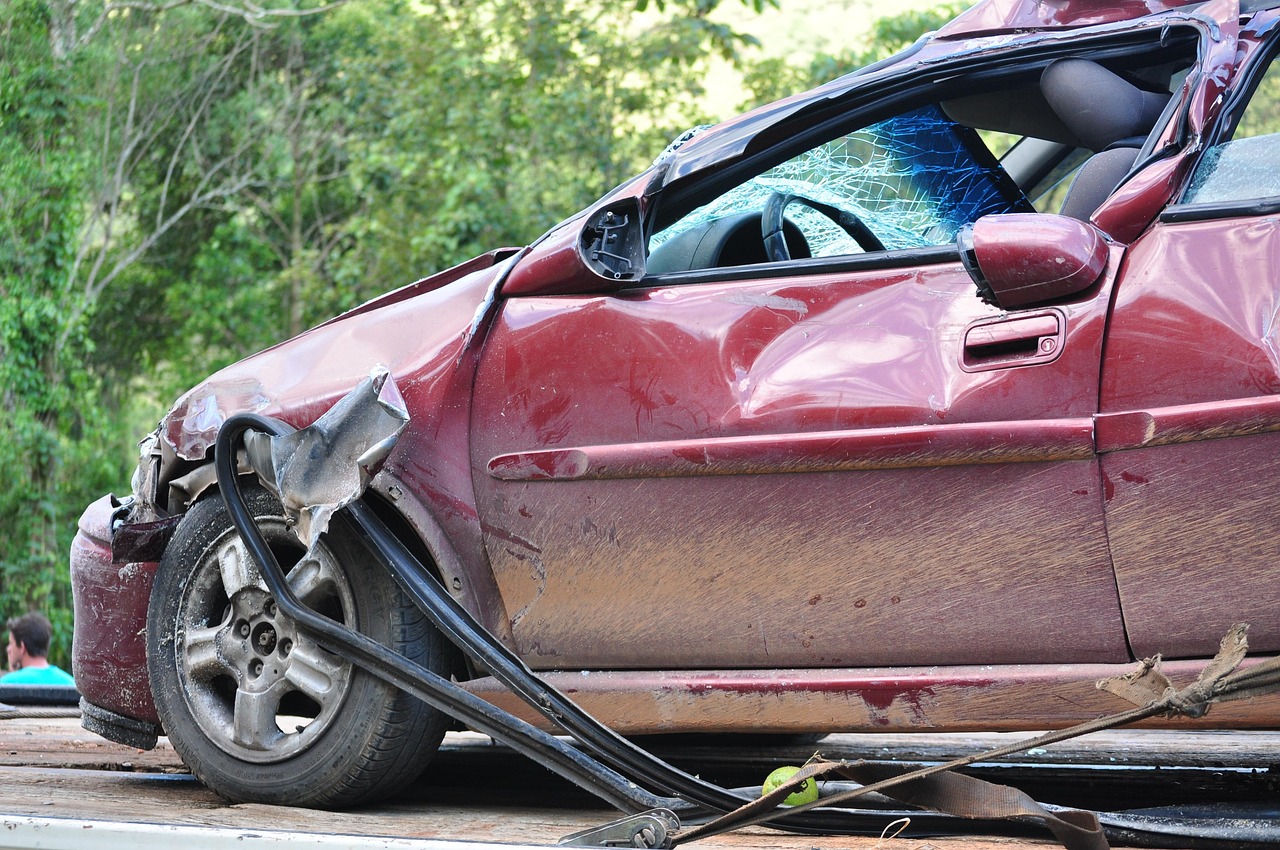Navigating the world of auto insurance can feel like driving through rush hour traffic – complex, confusing, and potentially overwhelming. But understanding your options and choosing the right coverage is crucial to protecting yourself, your vehicle, and your financial well-being. This guide aims to demystify auto insurance, providing you with the knowledge you need to make informed decisions and secure the best possible protection on the road.
Understanding the Basics of Auto Insurance
Auto insurance is a contract between you and an insurance company that protects you against financial loss in the event of an accident or theft. In exchange for paying a premium, the insurance company agrees to pay for covered losses as outlined in your policy.
What Auto Insurance Covers
Auto insurance policies typically cover a range of incidents, including:
- Bodily Injury Liability: Covers medical expenses and lost wages for people injured in an accident for which you are at fault.
Example: If you cause an accident that injures another driver and their passenger, your bodily injury liability coverage will help pay for their medical bills and lost wages.
- Property Damage Liability: Covers damage to another person’s property (like their car or a fence) in an accident you caused.
Example: If you rear-end another vehicle, this coverage would pay for the repair of their damaged bumper and trunk.
- Collision Coverage: Covers damage to your vehicle resulting from a collision with another vehicle or object, regardless of who is at fault.
Example: Hitting a tree or another car would be covered under collision coverage, less your deductible.
- Comprehensive Coverage: Covers damage to your vehicle from incidents other than collisions, such as theft, vandalism, fire, hail, or natural disasters.
Example: If your car is stolen or damaged by a hailstorm, comprehensive coverage would help pay for repairs or replacement.
- Uninsured/Underinsured Motorist Coverage: Covers your medical expenses and vehicle damage if you’re hit by a driver who doesn’t have insurance or doesn’t have enough insurance to cover your losses.
Example: If you’re injured in an accident caused by a driver with no insurance, this coverage can help pay for your medical bills and lost wages.
- Personal Injury Protection (PIP): Covers medical expenses and lost wages for you and your passengers, regardless of who is at fault in an accident (available in some states).
Factors Affecting Your Auto Insurance Premium
Several factors influence the cost of your auto insurance premium:
- Driving Record: A clean driving record with no accidents or moving violations will result in lower premiums.
- Age and Experience: Younger and less experienced drivers typically pay higher premiums due to a higher risk profile.
- Vehicle Type: The make and model of your vehicle can affect your premium, as some cars are more expensive to repair or replace.
- Location: Premiums vary depending on your location due to factors like traffic density, accident rates, and crime rates.
- Coverage Levels: Higher coverage limits and lower deductibles will result in higher premiums.
- Credit Score: In some states, insurers use credit scores to determine premiums. A good credit score typically results in lower premiums.
- Actionable Takeaway: Understanding these factors can help you make informed decisions about your coverage levels and potentially lower your premiums. For instance, taking a defensive driving course might improve your driving record, or increasing your deductible could lower your monthly payments.
Types of Auto Insurance Coverage
Choosing the right type and amount of coverage is essential for adequate protection.
Liability Coverage
Liability coverage is the cornerstone of auto insurance, protecting you financially if you’re at fault in an accident that causes injury or property damage to others.
- Bodily Injury Liability: Covers medical expenses, lost wages, and other damages for injuries you cause to others. It’s crucial to have sufficient coverage to protect your assets in case of a serious accident. Minimum coverage amounts are mandated by most states, but these limits are often too low.
Example: A serious accident resulting in permanent injuries can easily exceed state minimums, leaving you personally liable for the remaining costs.
- Property Damage Liability: Covers the cost of repairing or replacing another person’s property that you damage in an accident. Like bodily injury liability, it’s essential to have enough coverage to protect your assets.
Example: If you total another person’s car, your property damage liability coverage would pay for the replacement cost, up to your policy limit.
Physical Damage Coverage
Physical damage coverage protects your vehicle from damage, regardless of fault.
- Collision Coverage: Covers damage to your vehicle resulting from a collision with another vehicle or object. This coverage is beneficial if you’re at fault or if the other driver is uninsured or underinsured.
Example: If you back into a pole in a parking lot, collision coverage will help pay for the repairs, less your deductible.
- Comprehensive Coverage: Covers damage to your vehicle from non-collision events, such as theft, vandalism, fire, hail, or natural disasters.
Example: If a tree falls on your car during a storm, comprehensive coverage would help pay for the repairs.
Other Important Coverages
- Uninsured/Underinsured Motorist Coverage: Protects you if you’re hit by a driver who doesn’t have insurance or doesn’t have enough insurance to cover your losses. This coverage is especially important in states with high rates of uninsured drivers.
Example: If you’re seriously injured by an uninsured driver, this coverage can help pay for your medical bills, lost wages, and pain and suffering.
- Medical Payments (MedPay): Covers medical expenses for you and your passengers, regardless of who is at fault in an accident.
Example: Even if you’re at fault, MedPay can help cover immediate medical expenses for you and your passengers.
- Personal Injury Protection (PIP): Covers medical expenses, lost wages, and other expenses for you and your passengers, regardless of fault (available in some states).
- Gap Insurance: Covers the difference between the actual cash value of your car and the amount you still owe on your car loan if your car is totaled.
Example: If you owe $20,000 on your car loan, but your car is only worth $15,000 when it’s totaled, gap insurance would cover the $5,000 difference.
- Actionable Takeaway: Assess your individual needs and risk tolerance when choosing coverage levels. Consider your assets, driving habits, and the likelihood of encountering uninsured or underinsured drivers in your area. Increasing coverage limits and adding optional coverages can provide greater financial protection.
How to Save Money on Auto Insurance
Auto insurance can be a significant expense, but there are several ways to lower your premiums.
Discounts
- Good Driver Discount: Insurers offer discounts to drivers with clean driving records.
Example: Maintaining a clean driving record for several years can result in a significant discount on your premium.
- Multi-Policy Discount: Bundling your auto insurance with other policies, such as homeowners or renters insurance, can result in a discount.
Example: Purchasing both your auto and homeowners insurance from the same company can save you 10-20% on your premiums.
- Vehicle Safety Discount: Insurers may offer discounts for vehicles equipped with safety features, such as anti-lock brakes, airbags, and anti-theft devices.
Example: Owning a car with advanced safety features like lane departure warning and automatic emergency braking could qualify you for a discount.
- Low Mileage Discount: If you drive fewer miles per year than average, you may be eligible for a discount.
Example: If you work from home or use public transportation frequently, you may qualify for a low mileage discount.
- Student Discount: Full-time students with good grades may be eligible for a discount.
Example: Maintaining a GPA of 3.0 or higher can earn you a student discount.
- Affiliation Discounts: Some insurers offer discounts to members of certain organizations, such as alumni associations or professional groups.
Example: Being a member of a specific alumni association could unlock discounted rates with partnered insurance providers.
Other Cost-Saving Strategies
- Increase Your Deductible: A higher deductible means you’ll pay more out-of-pocket in the event of an accident, but it also lowers your premium.
Example: Increasing your deductible from $500 to $1,000 can save you a significant amount on your premium.
- Shop Around and Compare Quotes: Get quotes from multiple insurance companies to find the best rates. Online comparison tools can make this process easier.
- Maintain a Good Credit Score: In many states, insurers use credit scores to determine premiums. Improving your credit score can lead to lower rates.
- Avoid Filing Small Claims: Filing small claims can increase your premium. It’s often better to pay for minor repairs out-of-pocket.
- Review Your Coverage Annually: Regularly review your coverage to ensure it still meets your needs and that you’re not paying for unnecessary coverage.
- Actionable Takeaway: Actively seek out discounts and implement cost-saving strategies to reduce your auto insurance premiums without compromising on adequate coverage. Regularly compare quotes from different insurers to ensure you’re getting the best possible rates.
Understanding the Claims Process
Knowing what to do after an accident is crucial for a smooth claims process.
What to Do After an Accident
- Ensure Safety: Check yourself and others for injuries. If necessary, call for medical assistance.
- Call the Police: If the accident involves injuries, significant property damage, or a dispute over fault, call the police to file a report.
- Exchange Information: Exchange insurance information, driver’s license information, and contact information with the other driver(s) involved.
- Document the Scene: Take photos or videos of the accident scene, including vehicle damage, road conditions, and any relevant details.
- Contact Your Insurance Company: Report the accident to your insurance company as soon as possible.
Filing a Claim
- Provide Detailed Information: When filing a claim, provide your insurance company with all the necessary information, including the date, time, and location of the accident, a description of what happened, and the contact information of the other driver(s) and witnesses.
- Cooperate with the Investigation: Cooperate with your insurance company’s investigation by providing any requested documents or information.
- Get an Estimate for Repairs: Obtain an estimate for the cost of repairs from a reputable body shop. Your insurance company may have preferred repair shops that offer guaranteed work.
- Review Your Policy: Review your policy to understand your coverage limits, deductibles, and any exclusions.
Resolving Claims Disputes
- Negotiate with the Insurer: If you disagree with the insurance company’s settlement offer, try to negotiate a fair resolution. Provide supporting documentation to support your claim.
- Consider Mediation or Arbitration: If negotiation fails, consider mediation or arbitration, where a neutral third party helps you and the insurance company reach an agreement.
- Consult with an Attorney: If you’re unable to resolve the dispute through negotiation, mediation, or arbitration, consult with an attorney specializing in auto insurance claims.
- *Actionable Takeaway: Be prepared for the possibility of an accident by knowing what steps to take immediately afterward. Promptly report the accident to your insurance company and cooperate with the claims process to ensure a fair and efficient resolution.
Conclusion
Auto insurance is a vital component of responsible car ownership, providing financial protection against unexpected events on the road. By understanding the different types of coverage, factors affecting premiums, and strategies for saving money, you can make informed decisions and secure the best possible protection for yourself and your vehicle. Remember to regularly review your coverage, shop around for the best rates, and be prepared for the claims process in case of an accident. Taking these steps will ensure that you’re well-protected and prepared for whatever the road may bring.




